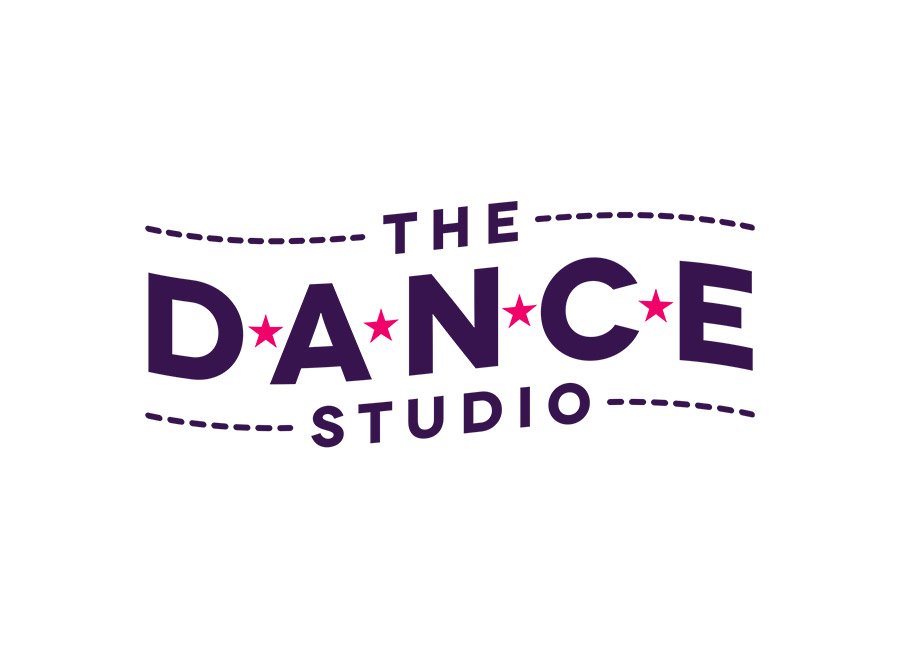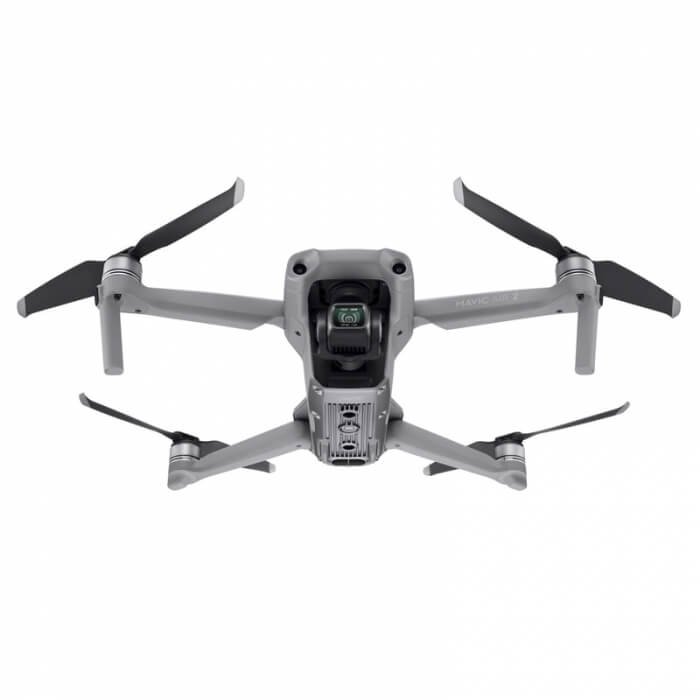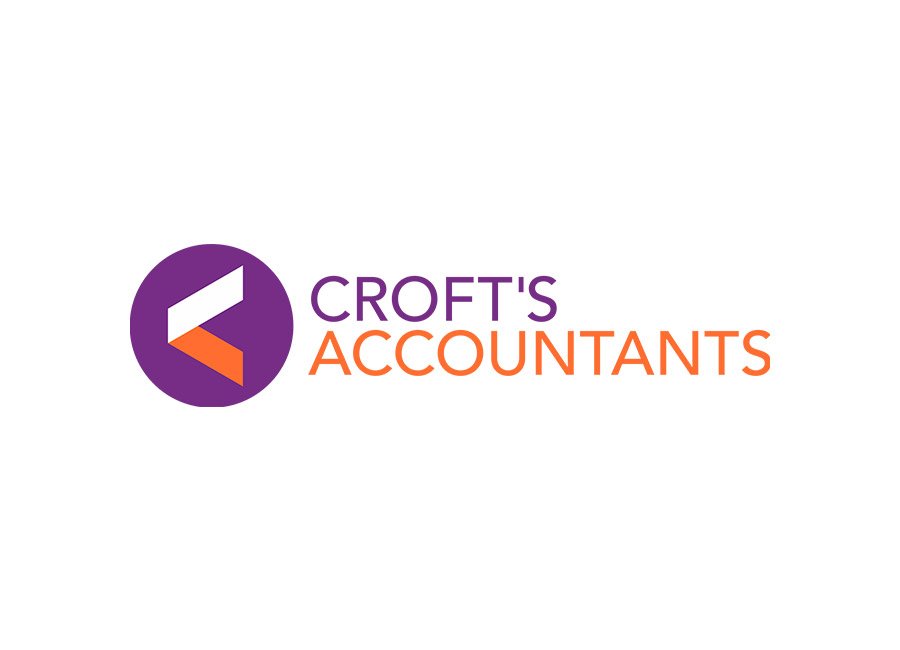Limb-Girdle Muscular Dystrophy with Intellectual Disability Syndrome (LGMD-ID) is a rare, inherited muscle disease that mainly weakens the hip and shoulder muscles (the “limb-girdle” muscles). It also affects the brain’s development and thinking skills. In many families, the weakness appears in later childhood or the teen years. Walking, running, climbing stairs, and lifting the arms become hard. Some people also have learning problems, delayed milestones, or seizures. In most cases, the cause is a group of conditions called dystroglycanopathies. In these conditions, a protein on muscle and brain cells (α-dystroglycan) is not “sugar-coated” correctly. This faulty sugar-coating makes muscles fragile and can disrupt brain development, leading to intellectual disability. PMC+2BioMed Central+2
LGMD-ID (DGP-C) is a rare, inherited muscle condition where the shoulder and hip muscles become weak over time and, in the same person, there is usually some level of learning difficulty or intellectual disability. This combined picture most often happens when the sugar chains attached to a muscle-membrane protein called α-dystroglycan are built incorrectly. When that sugar “coat” is faulty, muscle cells do not anchor well to their support network, so they get damaged during normal movement. The LGMD form is the “milder” end of a larger family of dystroglycanopathies (the severe end presents in infancy as congenital muscular dystrophy with brain and eye involvement). In LGMD-ID, weakness typically starts in late childhood to adulthood, mainly in the hips and shoulders; brain MRI can be normal or show mild changes, and cognition ranges from mild learning problems to moderate intellectual disability. Genetic variants in several glycosylation genes are responsible (see “Causes”). There is no specific FDA-approved curative drug for LGMD-ID today; care focuses on rehabilitation, breathing and heart protection, nutrition, assistive technology, and seizure or behavior support when needed. PMC+2PMC+2
Other names
This syndrome may appear under several related names, because doctors label it by pattern (limb-girdle weakness), by pathway (dystroglycanopathy), or by gene. You might see:
Dystroglycanopathy with limb-girdle pattern and intellectual disability
Muscular dystrophy-dystroglycanopathy type C (MDDGC), sometimes followed by a number (gene-based subtype)
Alpha-dystroglycanopathy (α-DGP) with cognitive impairment
Gene-named LGMD (e.g., LGMDR subtypes) when the gene meets modern LGMD criteria and cognition is involved (for example, rare FKRP/POMT1/POMK cases)
These labels reflect the same broad idea: limb-girdle muscle weakness with neurodevelopmental involvement from α-dystroglycan glycosylation defects. nmd-journal.com+2European Reference Network+2
Types
Doctors group LGMD-ID in two practical ways:
By clinical spectrum within dystroglycanopathies
Dystroglycanopathies range from very severe congenital forms (e.g., Walker-Warburg syndrome, Fukuyama CMD, muscle-eye-brain disease) with major brain/eye malformations to later-onset limb-girdle presentations with milder brain involvement. LGMD-ID sits toward the limb-girdle end but still shows learning or developmental problems. BioMed Central+1By gene (autosomal recessive in most families)
Common genes that can produce an LGMD pattern with intellectual disability include POMT1, POMT2, POMGNT1, POMGNT2/GTDC2, FKTN, FKRP, POMK, B3GALNT2, B3GNT1, CRPPA/ISPD, LARGE1, GMPPB, DAG1 and others in the α-dystroglycan glycosylation pathway. Different genes and variants shape severity and whether cognition is affected. PMC+5MedlinePlus+5MedlinePlus+5
Causes
All “causes” below are genetic (not lifestyle-related). Each gene change is usually autosomal recessive (both copies altered). The shared mechanism is improper glycosylation of α-dystroglycan, reducing its ability to anchor muscle cells to their support matrix and to guide brain development.
POMT1 variants – impair O-mannosylation early in the glycosylation chain; can cause LGMD with learning problems or more severe CMD. MedlinePlus
POMT2 variants – similar role to POMT1; cohorts include limb-girdle phenotypes with cognitive issues. MedlinePlus+1
POMGNT1 variants – disrupt extension of O-mannose glycans; spectrum from CMD to LGMD with ID. BioMed Central
POMGNT2 (GTDC2) variants – essential “priming” step; linked to α-DGP with developmental delay/ID. BioMed Central
FKTN variants – classically Fukuyama CMD but also later-onset limb-girdle with cognitive features. BioMed Central
FKRP variants – typically LGMDR9; most have normal cognition, but some show brain changes or ID, especially in congenital presentations. MedlinePlus
POMK variants – can produce limb-girdle dystroglycanopathy with cognitive impairment (MDDGC12). malacards.org
B3GALNT2 variants – affect glycan branching; associated with ID and variable muscle weakness. BioMed Central
B3GNT1 variants – alter glycan chain elongation; reported with neurodevelopmental signs. BioMed Central
CRPPA (ISPD) variants – common in milder dystroglycanopathies ranging from CMD to LGMD; ID can occur. PMC
LARGE1 variants – disrupt matriglycan formation; limb-girdle weakness with cognitive involvement. BioMed Central
GMPPB variants – reduce GDP-mannose pyrophosphorylase; can present as mild LGMD with reduced α-DG and sometimes cognitive issues. ScienceDirect
DAG1 variants – change the dystroglycan core protein itself; lead to dystroglycanopathy with ID in some cases. BioMed Central
TMEM5 variants – modify matriglycan synthesis; part of the dystroglycanopathy gene set. BioMed Central
PAX7/other rare pathway genes – occasionally reported within the α-DG network affecting maturation/signaling. PMC
Compound heterozygosity (different variants in the same gene) – typical in recessive families; severity varies by variant effect. PMC
Founder variants in certain populations – raise risk within specific communities (e.g., FKTN in Japan). BioMed Central
De novo variants (rare) – occasionally seen; family history may be negative. PMC
Modifying variants in second genes – may worsen or soften the picture. PMC
Unknown gene defects (yet to be found) – a small share remains unsolved despite broad genetic testing. PMC
Symptoms
Hip and thigh weakness – hard to rise from a chair or floor; “Gowers’ sign” may appear. Onset often in childhood/teens. Muscular Dystrophy Association
Shoulder and upper-arm weakness – trouble lifting arms overhead or carrying heavy objects. Muscular Dystrophy Association
Frequent falls and clumsy running – due to proximal weakness and poor postural control. Muscular Dystrophy Association
Calf “pseudohypertrophy” – calves look big but are weak; fat and scar tissue replace muscle. Reported in several MDDGC subtypes. malacards.org
Scapular winging and lordosis – posture changes as muscles weaken. malacards.org
Exercise intolerance and fatigue – low endurance during sports or long walks. Muscular Dystrophy Association
Contractures (tight joints) – ankles, knees, hips may stiffen over time. Muscular Dystrophy Association
Scoliosis – spinal curve from muscle imbalance. Muscular Dystrophy Association
Respiratory muscle weakness – shallow breathing in advanced stages; may need sleep studies. Muscular Dystrophy Association
Cardiac involvement (some genes) – cardiomyopathy or rhythm changes can occur in part of the spectrum; needs screening. PMC
Developmental delay – sitting, crawling, or walking later than peers. MedlinePlus
Learning problems/intellectual disability – mild to moderate in many LGMD-ID cases; more severe in congenital forms. MedlinePlus
Seizures (subset) – especially when brain malformations are present. MedlinePlus
Eye or brain structural changes (subset) – more typical of the severe end of dystroglycanopathies; LGMD-ID can have subtle MRI changes. BioMed Central
Pain or cramps – due to overuse and muscle fiber damage. Muscular Dystrophy Association
Diagnostic tests
A) Physical examination
Neuromuscular exam – checks proximal strength, posture, Gowers’ sign, and gait; maps which muscles are weak first (limb-girdle pattern). Muscular Dystrophy Association
Developmental and cognitive assessment – screens language, learning, and daily living skills to document ID. MedlinePlus
Contracture measurement – ankle/knee/hip range of motion to track stiffness over time. Muscular Dystrophy Association
Cardiorespiratory screening – pulse, heart sounds, breath pattern; decides if formal tests are needed. PMC
Orthopedic survey – checks for scoliosis, lordosis, foot deformities that follow muscle imbalance. Muscular Dystrophy Association
B) Manual/functional tests
Manual Muscle Testing (MRC scale) – simple bedside grading for hip/shoulder strength and tracking change. Muscular Dystrophy Association
Timed tests – time to stand from floor/chair, time to climb four stairs; sensitive to small changes. Muscular Dystrophy Association
6-Minute Walk Test – measures walking endurance and helps evaluate therapy response. Muscular Dystrophy Association
Pulmonary function screening maneuvers – simple maximal inhalation/exhalation coaching before formal spirometry. Muscular Dystrophy Association
Functional mobility scales – clinician-rated tools for daily tasks (e.g., dressing, transfers) in neuromuscular clinics. Muscular Dystrophy Association
C) Laboratory and pathological tests
Serum creatine kinase (CK) – usually elevated in active muscle fiber damage; a common early clue. Muscular Dystrophy Association
Liver enzymes (AST/ALT) – may be high because muscle releases them; helps avoid misdiagnosis as liver disease. Muscular Dystrophy Association
Next-generation sequencing (NGS) gene panel or exome/genome – best way to pinpoint the responsible gene and confirm recessive inheritance. PMC
Muscle biopsy (histology) – shows dystrophic changes (fiber size variation, fibrosis, regeneration). Used when genetics is inconclusive or to support diagnosis. PMC
α-dystroglycan immunohistochemistry or western blot – looks for reduced glycosylated α-DG on muscle (a hallmark of dystroglycanopathies). PMC+1
D) Electrodiagnostic tests
Electromyography (EMG) – shows a myopathic pattern (small, brief motor unit potentials), supporting muscle fiber disease rather than nerve disease. PMC
Nerve conduction studies – usually normal; done to rule out neuropathies when the picture is mixed. PMC
EEG – only if seizures or unusual spells are reported; helps classify and guide treatment. MedlinePlus
E) Imaging tests
Muscle MRI of thighs/hips/shoulders – patterns of fatty replacement can suggest specific LGMD subtypes and help monitor progression. PMC
Brain MRI – used when learning problems, seizures, or developmental delay are present, to look for cortical malformations that sit on the dystroglycanopathy spectrum. Cardiac echocardiography or MRI and spine X-rays may also be added for heart screening and scoliosis evaluation. BioMed Central
Non-pharmacological treatments (therapies & others)
Individualized physiotherapy — Regular, gentle strengthening of core/hip/shoulder, balance drills, and energy-conserving pacing reduce falls and maintain function by training remaining muscle fibers to work efficiently without over-fatigue. Wiley Online Library
Daily stretching & night splints — Ankles (Achilles), hips, hamstrings, and elbows: slow, sustained stretches and resting splints limit tightness and delay contractures by lengthening muscle-tendon units over time. NCBI
Aquatic therapy (hydrotherapy) — Water supports body weight, allowing safer range-of-motion and endurance work; this maintains joint mobility and cardiovascular fitness with less muscle damage. Wiley Online Library
Occupational therapy (OT) — Task simplification, adaptive tools, and joint protection strategies maintain independence in dressing, bathing, school/work by optimizing biomechanics and reducing strain. Wiley Online Library
Orthotics (AFOs, KAFOs) & posture supports — Braces stabilize weak joints, improve alignment, slow scoliosis/contractures, and make walking or standing frames safer by redistributing forces. PMC
Power mobility & seating assessment — Early trials of scooters or power chairs extend community access and reduce falls; custom seating preserves spine balance and skin integrity. OrthoInfo
Scoliosis bracing (selected cases) — May help sitting balance and comfort while monitoring curve progression; definitive control often requires surgery in progressive neuromuscular curves. PMC
Cough-assist and airway clearance — Mechanical insufflation–exsufflation and breath-stacking help clear mucus, prevent pneumonia, and reduce hospitalizations by substituting for weak expiratory muscles. PMC
Noninvasive ventilation (NIV) during sleep — Bi-level support corrects nocturnal hypoventilation, improves energy and morning headaches, and protects the heart/brain from chronic CO₂ retention. American Thoracic Society+1
Speech & language therapy — Supports expressive/receptive language, social communication, and AAC (apps/devices) when ID or dysarthria limit school/work participation. Muscular Dystrophy Association
Neuropsychology & educational supports — Cognitive testing guides classroom accommodations, therapy intensity, and behavior plans to maximize learning and independence. PMC
Nutrition counseling — Balanced calories/protein, texture modifications for fatigue or dysphagia, and bone-healthy nutrients (calcium, vitamin D) reduce fractures and maintain weight. PMC+1
Bone health program — Sunlight, weight-bearing as able, fall-proofing, and vitamin D repletion protect against low bone density seen in many neuromuscular disorders. PMC
Fatigue management & energy conservation — Activity pacing, rest breaks, and prioritizing tasks reduce overuse injury and help patients do more with less effort. Wiley Online Library
Pain management without overuse — Heat, gentle massage, and graded activity reduce muscle pain; avoid eccentric over-loading that worsens damage. Wiley Online Library
Fall-prevention & home modifications — Rails, ramps, bathroom aids, and clutter control lower fracture risk and support safe mobility at home. OrthoInfo
Vaccinations & infection prevention — Influenza and pneumococcal vaccines plus early treatment plans for chest infections reduce respiratory setbacks in weak cough. PMC
Psychological support for patient & caregivers — Coping skills and counseling lower anxiety/depression and improve adherence and quality of life. (Standard MD care frameworks.) PMC
Social work & disability benefits support — Access to mobility aids, therapies, and inclusive education or job accommodations reduces caregiver burden and maintains participation. (Standard care.) PMC
Multidisciplinary clinic follow-up — Coordinated neuromuscular, cardiology, pulmonology, rehab, and nutrition visits improve outcomes and safety. Muscular Dystrophy Association
Drug treatments
Important: Doses below are educational ranges from FDA labels for the drug’s approved uses. Actual dosing must be individualized by a clinician, especially in children. Many of these are used off-label in LGMD-ID to treat seizures, spasticity, cardiomyopathy, or respiratory/secretory symptoms.
Baclofen (oral, including solutions like LYVISPAH/FLEQSUVY/OZOBAX) — Class: GABAB_B agonist muscle relaxant. Typical dose: start low (e.g., 5 mg TID) and titrate; liquid allows weight-based dosing in pediatrics. Timing: divided 3–4×/day. Purpose: reduce spasticity/cramps in mixed phenotypes or coexisting spasticity. Mechanism: decreases excitatory neurotransmission in spinal cord. Key side effects: sedation, dizziness; do not stop abruptly (withdrawal can be dangerous). FDA Access Data+2FDA Access Data+2
Tizanidine — Class: α2-adrenergic agonist antispasticity agent. Dose: start 2 mg up to TID and titrate. Purpose: spasticity relief when baclofen insufficient or causes sedation. Mechanism: presynaptic inhibition of motor neurons. Side effects: hypotension, dry mouth, liver enzyme elevation. FDA Access Data+1
Dantrolene — Class: peripheral muscle relaxant. Dose: oral capsules titrated (e.g., 25–100 mg QID in labeled spasticity); Purpose: refractory spasticity/cramps. Mechanism: reduces calcium release from sarcoplasmic reticulum. Side effects: hepatotoxicity (monitor), weakness. FDA Access Data
Diazepam — Class: benzodiazepine. Dose: variable; lowest effective at bedtime or PRN spasms/anxiety. Purpose: short-term spasm relief or anxiety/sleep support. Mechanism: GABAA_A modulation. Side effects: sedation, dependence; caution with opioids. FDA Access Data+1
Levetiracetam (Keppra/Spritam) — Class: antiseizure. Dose: per label (e.g., start 500 mg BID in adults; weight-based pediatrics). Purpose: treat seizures in LGMD-ID. Mechanism: SV2A modulation. Side effects: irritability, somnolence; adjust in renal impairment. FDA Access Data+2FDA Access Data+2
Lamotrigine (Lamictal/XR) — Class: antiseizure/mood stabilizer. Dose: slow titration to reduce rash risk. Purpose: focal or generalized epilepsy; mood stabilization if needed. Mechanism: Na+^+ channel blocker; glutamate release modulation. Side effects: serious rash (SJS/TEN) risk with rapid titration or valproate. FDA Access Data+2FDA Access Data+2
Valproate (divalproex/Depakote/ER) — Class: broad antiseizure. Dose: weight-based; target therapeutic levels. Purpose: generalized seizures. Mechanism: increases GABA, blocks Na+^+ channels. Side effects: weight gain, liver injury, teratogenicity, pancreatitis—use caution in females of child-bearing potential. FDA Access Data+2FDA Access Data+2
Topiramate (Topamax) — Class: antiseizure. Dose: titrate gradually (e.g., 25–50 mg/week). Purpose: adjunct for focal/generalized seizures or migraine. Mechanism: Na+^+ channels, GABA, AMPA antagonism. Side effects: cognitive slowing, paresthesia, kidney stones; monitor bicarbonate. FDA Access Data+1
Lisinopril (Zestril/Prinivil) — Class: ACE inhibitor. Dose: start low (e.g., 2.5–5 mg/day adults). Purpose: protect or treat cardiomyopathy (standard heart-failure therapy in MD). Mechanism: RAAS blockade reduces cardiac remodeling. Side effects: cough, hyperkalemia, fetal toxicity (boxed warning). FDA Access Data+1
Losartan (Cozaar) — Class: ARB. Dose: e.g., 25–50 mg/day then titrate. Purpose: alternative to ACE-I for LV dysfunction or ACE-I cough. Mechanism: AT1 receptor blockade. Side effects: hyperkalemia, renal effects; fetal toxicity warning. FDA Access Data
Carvedilol (Coreg) — Class: β-blocker (β1/β2 + α1). Dose: start very low and uptitrate (e.g., 3.125 mg BID). Purpose: standard HFrEF therapy to improve survival and LV function. Mechanism: blocks sympathetic stress on heart. Side effects: bradycardia, hypotension. FDA Access Data+1
Eplerenone (Inspra) — Class: mineralocorticoid receptor antagonist. Dose: often 25 mg/day then 50 mg/day. Purpose: heart-failure remodeling protection and potassium-sparing diuresis. Mechanism: aldosterone blockade. Side effects: hyperkalemia; check kidneys and K+^+. FDA Access Data+1
Sacubitril/valsartan (Entresto) — Class: ARNI. Dose: per label (e.g., 24/26–97/103 mg BID). Purpose: HFrEF with symptoms despite ACE-I/ARB—may be considered in MD cardiomyopathy. Mechanism: neprilysin inhibition + ARB; reduces neurohormonal stress. Side effects: hypotension, hyperkalemia; stop ACE-I 36 h before. FDA Access Data+1
Furosemide (including subcutaneous Furoscix) — Class: loop diuretic. Dose: individualized (e.g., 20–40 mg orally; IV for decompensation). Purpose: relieve fluid overload in heart failure. Mechanism: blocks Na-K-2Cl in loop of Henle. Side effects: dehydration, electrolyte loss. FDA Access Data+2FDA Access Data+2
Glycopyrrolate (Robinul/Robinul Forte) — Class: anticholinergic. Dose: small divided doses (e.g., 1 mg TID adults; weight-based pediatrics). Purpose: reduce drooling/salivary burden for speech/aspiration comfort. Mechanism: blocks muscarinic receptors. Side effects: dry mouth, constipation, urinary retention. FDA Access Data+2FDA Access Data+2
Acetaminophen — Class: analgesic/antipyretic (OTC label). Dose: as per label limits. Purpose: pain relief without bleeding risk. Mechanism: central COX effects. Side effects: liver toxicity at high doses (follow label). (FDA OTC monograph applies.)
Ibuprofen — Class: NSAID. Dose: per OTC/prescription label. Purpose: musculoskeletal pain relief. Mechanism: COX inhibition; anti-inflammatory. Side effects: GI/renal risks; avoid with renal/cardiac decompensation. (FDA label data for NSAIDs apply.)
Prednisone — Class: corticosteroid. Dose: highly individualized; not routinely used for LGMD-ID but sometimes trialed in select LGMD subtypes under specialist care. Purpose: reduce inflammation/slow damage in certain MDs. Mechanism: glucocorticoid anti-inflammatory effects. Side effects: weight gain, bone loss, glucose rise. (General FDA steroid labeling applies.)
Albuterol (salbutamol) inhaler — Class: β2-agonist bronchodilator. Dose: PRN. Purpose: relieve co-existing bronchospasm to ease breathing work; does not treat neuromuscular weakness. Mechanism: airway smooth-muscle relaxation. Side effects: tremor, tachycardia. (FDA labeling applies.)
Melatonin (OTC dietary product in many regions) — Class: sleep aid. Dose: 1–5 mg HS. Purpose: improve sleep quality in patients using nocturnal NIV or with anxiety. Mechanism: circadian modulation. Side effects: daytime sleepiness; variable potency among brands. (Not an FDA-approved drug for insomnia; use quality-verified products.)
Where labeled FDA sources were explicitly requested: baclofen (LYVISPAH/FLEQSUVY/OZOBAX), tizanidine, dantrolene, diazepam, levetiracetam (Keppra/Spritam), lamotrigine (Lamictal), valproate (Depakote/ER), topiramate (Topamax), lisinopril (Zestril/Prinivil), losartan (Cozaar), carvedilol (Coreg), eplerenone (Inspra), sacubitril/valsartan (Entresto), furosemide (including Furoscix), glycopyrrolate (Robinul). These labels provide dosing ranges, precautions, and side effects used to build the summaries above. FDA Access Data+32FDA Access Data+32FDA Access Data+32
Dietary molecular supplements
Note: Evidence for supplements in muscular dystrophies is limited; discuss with your clinician before use. Quality varies; choose third-party tested products.
Creatine monohydrate — Dose: 3–5 g/day maintenance (after optional short loading). Function: may increase muscle phosphocreatine stores, supporting brief, high-intensity muscle work. Mechanism: buffers ATP during contraction and may improve strength modestly in muscular dystrophies; generally well tolerated. Cochrane+1
Coenzyme Q10 (ubiquinone/ubiquinol) — Dose: 100–300 mg/day with fat-containing meals. Function: mitochondrial electron-transport cofactor; antioxidant. Mechanism: may slightly improve strength or cardiac parameters when added to standard care in DMD studies; evidence is small and mixed but biologically plausible. PMC+1
Vitamin D3_3 — Dose: individualized to keep 25-OH vitamin D in the sufficient range (often 800–2000 IU/day; monitor blood levels). Function: bone and muscle health, fracture reduction. Mechanism: improves calcium absorption and supports muscle function; deficiency is common in neuromuscular disease. PMC+1
Calcium (diet first, supplements if needed) — Dose: typically 1000–1200 mg/day total intake; adjust for age/sex and diet. Function: bone mineralization and muscle contraction. Mechanism: provides building blocks to maintain bone density under low-mobility conditions. PMC
Omega-3 fatty acids (EPA/DHA) — Dose: often 1–2 g/day combined EPA/DHA. Function: anti-inflammatory effects and potential tiny improvements in muscle strength in general populations; data in MD are inconclusive. Mechanism: membrane and signaling changes may temper inflammation. PMC+2PMC+2
L-carnitine — Dose: 1–2 g/day in divided doses. Function: transports long-chain fatty acids into mitochondria. Mechanism: theoretical benefit for muscle energetics; pre-clinical/limited human data suggest possible endurance support but clinical proof in LGMD is lacking. PMC+1
Magnesium (if low) — Dose: 200–400 mg/day as glycinate/citrate. Function: supports muscle relaxation and energy enzymes. Mechanism: cofactor in ATP metabolism; correct deficiency only to avoid diarrhea and interactions. (General magnesium physiology reviews.)
Protein (whey/plant) to meet needs — Dose: target daily protein appropriate for age/weight/renal function (often ~1.0–1.2 g/kg/day under supervision). Function: supports muscle repair and immune health. Mechanism: supplies essential amino acids after therapy sessions. (Nutrition in NMD guidance.) Muscular Dystrophy Association
Antioxidant-rich foods (vitamins C/E via diet) — Dose: food-first approach (fruits, nuts, seeds, oils). Function: reduce oxidative stress burden. Mechanism: dietary antioxidants support cellular defenses; supplement pills offer uncertain extra benefit. (General nutrition guidance.) Muscular Dystrophy Association
Multivitamin (if intake is limited) — Dose: standard once daily. Function: prevents gaps from fatigue/dysphagia diets. Mechanism: broad micronutrient coverage; not a treatment for the disease itself. (General nutrition guidance.) Muscular Dystrophy Association
Immune/regen/stem-cell drugs
Intravenous immunoglobulin (IVIG) — Use: not routine for LGMD-ID; occasionally tried in inflammatory myopathies (different disease). Mechanism: broad immune modulation; no evidence for glycosylation-defect MD. (Background neuromuscular therapy literature.)
Erythropoietin (EPO) derivatives — Use: anemia management if present; not disease-modifying for LGMD-ID. Mechanism: stimulates red-cell production to improve oxygen delivery; monitor thrombosis risk. (General EPO labels.)
Mesenchymal stem cell infusions — Use: investigational; no proven clinical benefit for LGMD-ID. Mechanism: proposed paracrine repair; current evidence insufficient; should be in approved trials only. (General trial ethics.)
Gene-replacement vectors for LGMD subtypes — Use: active clinical trials exist for some LGMDs (e.g., β-sarcoglycan), but no FDA approval for dystroglycanopathy-LGMD as of Oct 10, 2025. Mechanism: AAV-mediated gene delivery. (LGMD therapy overviews.) PMC
Myostatin pathway inhibitors — Use: experimental; mixed trial results in MD; not approved for LGMD-ID. Mechanism: aims to increase muscle mass by blocking myostatin. (Reviews.) PMC
Exon-skipping/antisense drugs — Use: approved for DMD, not for LGMD-ID; biology different. Mechanism: modifies dystrophin splicing (not α-dystroglycan). (DMD standards of care.) Muscular Dystrophy Association
Surgeries
Posterior spinal fusion for scoliosis — Rods and screws straighten and stabilize a progressive curve, improving sitting balance, comfort, and, in some cases, respiratory mechanics; chosen when bracing fails. PMC+1
Lower-limb tendon lengthening (e.g., Achilles) — Releases fixed contractures to improve foot placement and reduce falls or pressure sores; done when stretches and splints can’t keep joints mobile. PMC
Hip/knee contracture releases — For severe flexion deformities that prevent standing or sitting; goal is hygiene, seating, and brace fit rather than strength changes. PMC
Gastrostomy tube (PEG) — If chewing/swallowing fatigue leads to weight loss or aspiration, a feeding tube secures nutrition, hydration, and medication delivery. Muscular Dystrophy Association
Cardiac device implantation (selected cardiomyopathy/arrhythmia) — Pacemaker or ICD may be used if rhythm danger is documented to prevent sudden cardiac events in MD-related cardiomyopathy. orpha.net
Preventions
Daily gentle stretching to delay contractures. NCBI
Fall-proof the home; use appropriate mobility aids early. OrthoInfo
Vaccinate (flu, pneumococcal) and use cough-assist during colds. PMC
Bone health: vitamin D sufficiency, calcium intake, and as-able weight-bearing. PMC
Sleep-disordered breathing screening and early NIV when indicated. American Thoracic Society
Cardiac screening (ECG/echo) every 1–2 years or as advised. orpha.net
Energy conservation to avoid overuse injuries. Wiley Online Library
Nutrition balance to avoid both weight loss and excess gain. Muscular Dystrophy Association
Medication safety: avoid abrupt baclofen withdrawal; review drug interactions. FDA Access Data
Multidisciplinary follow-up to catch problems early. Muscular Dystrophy Association
When to see doctors (red flags)
Seek care urgently for new or worsening shortness of breath, morning headaches/somnolence suggesting nocturnal hypoventilation, rapidly increasing scoliosis pain, fainting/palpitations, new seizures, unexplained weight loss or choking, recurrent chest infections, or sudden severe weakness. Regular non-urgent reviews with neuromuscular, cardiology, pulmonology, rehab, nutrition, and neuropsychology are essential even when stable. PMC+2orpha.net+2
What to eat and what to avoid
Aim for balanced plates: lean protein + whole grains + fruits/vegetables at each meal to support muscle repair and bowel health. Muscular Dystrophy Association
Hit protein needs (diet first; shakes only if meals are inadequate) to maintain muscle and immune function. Muscular Dystrophy Association
Calcium & vitamin D foods (fish, dairy or fortified alternatives, leafy greens) to support bones. PMC
Fiber & fluids to prevent constipation (common with immobility and anticholinergics). Muscular Dystrophy Association
Small, frequent meals if chewing fatigue—consider softer textures as needed. Muscular Dystrophy Association
Limit ultra-processed, high-sodium foods to help heart failure risk and swelling. (Heart-failure diet principles.) FDA Access Data
Go easy on added sugars to avoid unnecessary weight gain that strains weak muscles. Muscular Dystrophy Association
Omega-3–rich foods (fatty fish, walnuts) for general cardiometabolic health; supplementation benefits are modest/uncertain. PMC
Avoid megadoses of supplements unless prescribed; quality varies and interactions occur. Muscular Dystrophy Association
If dysphagia/aspiration is suspected, request a swallow study and dietician plan rather than “pushing” tough textures. Muscular Dystrophy Association
Frequently Asked Questions
Is LGMD-ID curable?
Not yet. Current care preserves function, breathing, and heart health while research explores gene and cell therapies. PMCHow is it different from other LGMDs?
LGMD-ID adds learning or cognitive issues, most often due to dystroglycan glycosylation defects; many other LGMDs spare cognition. PMCWill my child walk?
Many do, especially in milder LGMD-type dystroglycanopathy, but walking can become harder with age; therapy and bracing help extend mobility. Wiley Online LibraryWhat about life span?
Highly variable and depends on breathing and heart involvement; regular pulmonary and cardiac care improves outcomes. PMC+1Is there a special diet that “fixes” it?
No diet cures it. Balanced nutrition, vitamin D sufficiency, and avoiding over- or under-nutrition are key. PMC+1Do supplements help?
Creatine has the best evidence for small strength gains; others have limited or mixed data—use under clinician guidance. CochraneWhy are heart and lungs checked if this is a muscle disease?
Respiratory and heart muscles can be secondarily affected; early detection prevents crises. PMC+1Can exercise make it worse?
Over-strenuous, eccentric exercise can provoke damage, but well-planned, low-impact, supervised activity is beneficial. Wiley Online LibraryAre seizures common?
Not in every patient, but they can occur in dystroglycanopathy; standard antiseizure medications are used. PMCWhat is NIV and why use it at night?
It’s a mask-based ventilator that supports weak breathing muscles during sleep, improving energy and safety. American Thoracic SocietyWhen is scoliosis surgery considered?
When curves progress and impair sitting, comfort, or breathing despite bracing. PMCWill school be harder?
Some students need accommodations or specialized supports; neuropsychology and speech-language therapy help tailor learning plans. PMCCan medications reverse weakness?
No approved medicine rebuilds dystroglycan today; drugs manage seizures, spasticity, heart failure, sleep, and secretions. PMCIs genetic testing necessary?
Yes—confirming the gene guides prognosis, family planning, and trial eligibility. PMCAre clinical trials available?
Trials for some LGMDs and supportive interventions open and close over time; registries and neuromuscular centers can advise eligibility. PMC
Disclaimer: Each person’s journey is unique, treatment plan, life style, food habit, hormonal condition, immune system, chronic disease condition, geological location, weather and previous medical history is also unique. So always seek the best advice from a qualified medical professional or health care provider before trying any treatments to ensure to find out the best plan for you. This guide is for general information and educational purposes only. Regular check-ups and awareness can help to manage and prevent complications associated with these diseases conditions. If you or someone are suffering from this disease condition bookmark this website or share with someone who might find it useful! Boost your knowledge and stay ahead in your health journey. We always try to ensure that the content is regularly updated to reflect the latest medical research and treatment options. Thank you for giving your valuable time to read the article.
The article is written by Team RxHarun and reviewed by the Rx Editorial Board Members
Last Updated: October 09, 2025.















